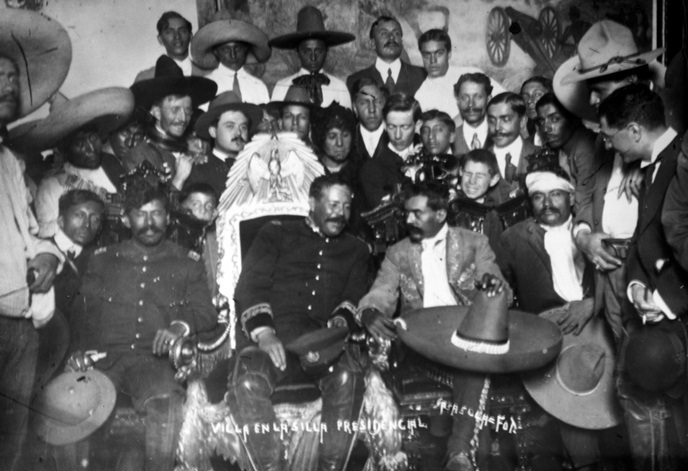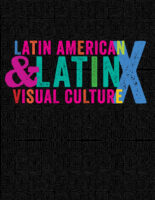Martyr Photography: A Q&A with Lucy O'Sullivan

Lucy O'Sullivan's article "Martyrdom in the Age of Mechanical Reproduction: The Photograph as Testimony and Trace in Mexico’s Cristero War (1926–29)," published in Latin American and Latinx Visual Culture (LALVC), was the recipient of an honorable mention for the 2025 Association for Latin American Art (ALAA) Article Award. We invite you to learn more about O'Sullivan's research in the Q&A below and to read her article for free online for a limited time.
Your article focuses on photography during the Cristero War; can you tell us a little bit about this conflict and why it was important?
The Cristero War (1926-1929), or “Cristiada” as it is also know, was a civil conflict that erupted almost exactly a century ago when Catholic partisans rebelled against the anticlerical policies of Mexico’s post-revolutionary government. Harsh restrictions on public worship, religious teaching in primary schools and political participation for the clergy ultimately prompted thousands of Catholics—known as Cristeros for their rallying cry of ¡Viva Cristo Rey! or “Long Live Christ the King!”—to take up arms. The war played out through guerilla warfare between Catholic militants and federal forces mostly along the central-western states of Mexico’s co-called “Rosary Belt” like Jalisco, Guanajuato and Michoacán. By the time the fighting officially came to an end in 1929 with the signing of a Church-State pact, the war had claimed somewhere in the region of 80,000-90,000 lives, although historians disagree over the precise figure. The Cristero War prompted significant numbers of Catholics to emigrate across the U.S border and had a significant impact on Mexico’s political landscape in the twentieth century by fostering conservative opposition to the dominant revolutionary party, the PRI (Partido Revolucionario Institucional). Although Mexico is still a predominantly Catholic country today, memory of the Cristero War remains contested. With the centenary fast approaching, it is a particularly interesting moment to researching this conflict and reflecting on its legacies.
How did you become interested in this particular aspect of Mexican history and visual culture?
As is usually the case with research, I stumbled upon it. My first book mapped transformations in how revolutionary nationhood was conceptualized in Mexico from the 1920s to the 1950s by comparatively analysing representations of the body in the works of the muralist Diego Rivera and writer Juan Rulfo. While carrying out research for that project, I came across the famous photographs depicting the execution of the Jesuit priest Miguel Pro in 1927 (see image above), the Cristero War’s most famous martyr. Pro was executed along with three others in November 1927 for his alleged involvement in an attempt to assassinate former President Álvaro Obregón in Mexico City, although with little evidence. As the firing squad prepared to take aim and assembled journalists raised their cameras, the priest stretched his arms out in the form of a crucifix. Unsurprisingly, this image resonated with Catholics in and beyond Mexico as a powerful visual statement of Catholic persecution and remains the defining iconic moment of the war. I found the photograph so compelling that I delved into the broader body of "martyr photographs" produced during the War to better understand how the Cristeros utilized visual media to promote their cause.
Who would be most interested in this article?
I suppose historians of Mexican Catholicism, first and foremost. The Cristeros relied heavily on photographs, prayer cards and postcards as propaganda tools, but so far there has been almost no serious engagement with these mass-produced materials as historical sources. I make the case for doing so by showing how the Cristeros used photography to produce an emotionally compelling narrative framework for Catholic militancy that justified their religious crusade and often legitimized non-canonical interpretations of martyrdom.
The argument that these portable photographic images functioned like relics by providing Catholic sympathizers with a sense of tactile and tangible connection to Cristero martyrs will be of interest to material religion scholars. That area of study explores the ways in which lived religion and material culture are interlinked, but has perhaps focused less frequently on how those interactions play out in contexts of violence and conflict specifically.
Finally, I hope these conclusions will also be relevant to those working on Mexican photography in the early twentieth century. The Mexican Revolution (1910-17) was famously the first major conflict to be photographically documented on a mass scale, so when we think of Mexican photography in the context of the revolutionary process we tend of this explosion of photojournalistic activity and iconic shots like “Villa en la silla” (1914) (see image below), which shows the triumphant Pancho Villa reclining in the presidential chair alongside fellow revolutionary Emiliano Zapata. My article tries to complicate some of these assumptions and associations by showing how photography was also used to articulate a powerful counter-revolutionary vision of Mexico during these decades which, as we will no doubt see during the upcoming centenary, continues to resonate today.


We invite you to read Lucy O'Sullivan's article, "Martyrdom in the Age of Mechanical Reproduction: The Photograph as Testimony and Trace in Mexico’s Cristero War (1926–29)," for free online for a limited time.
Print copies of the January 2024 issue of Latin American and Latinx Visual Culture (issue 6.1), in which the article appears, as well as other individual issues of LALVC, can be purchased on the journal’s site.
For ongoing access to LALVC, please ask your librarian to subscribe and/or purchase an individual subscription. ALAA members are eligible for a discounted price on LALVC subscriptions.
